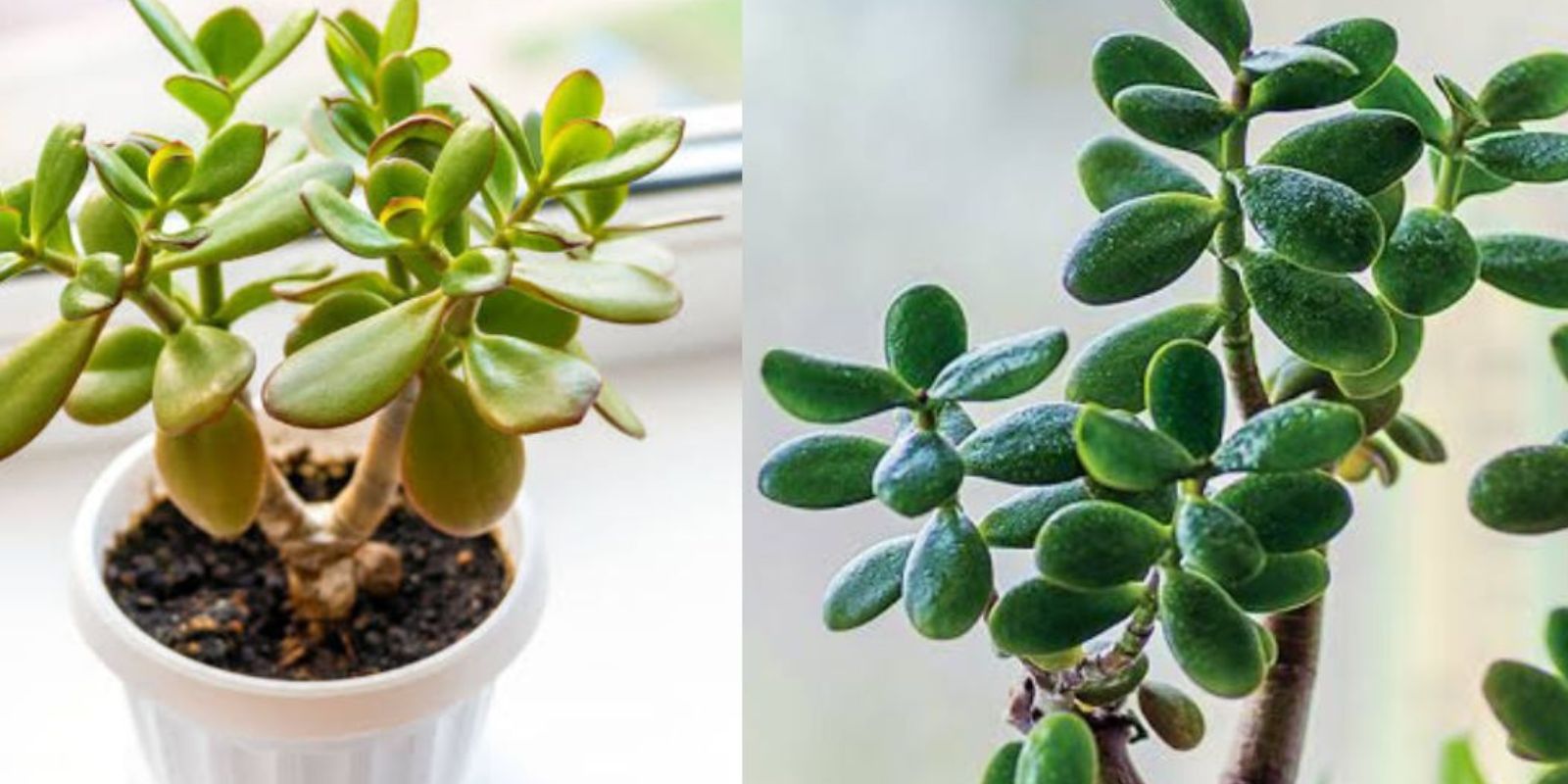The jade plant, also known as Crassula ovata or the “money plant,” is a symbol of prosperity, luck, and wealth in many cultures. With its glossy, fleshy leaves and robust growth, this succulent is a popular choice for homes and offices. While many people grow jade plants for their beauty and symbolism, not everyone knows that these plants can bloom with beautiful white or pink flowers. Achieving this requires patience, the right conditions, and a little extra care. Here’s a complete guide to help your jade plant thrive, bloom, and fill your space with positive energy.
Why the Jade Plant is Special
The jade plant is more than just a decorative houseplant. In feng shui, it is believed to attract good fortune, wealth, and positive energy. Its leaves, shaped like coins, are considered symbols of prosperity. When a jade plant blooms, it is seen as an even stronger sign of luck and abundance. While blooming is rare indoors, it’s entirely possible with the right techniques.
How to Make Your Jade Plant Bloom
1. Choose a Healthy Jade Plant
Start by selecting a healthy plant. Look for one with thick, fleshy leaves and no signs of disease or pests. A strong plant is more likely to bloom and thrive under your care.
2. Provide Optimal Lighting
Jade plants need plenty of light to grow well and produce flowers. Place your plant in a location with bright, indirect sunlight. A south-facing window is ideal. Avoid exposing the plant to harsh direct sunlight for extended periods, as it can scorch the leaves.
3. Water the Plant Properly
Watering is a critical factor in jade plant care. Overwatering can lead to root rot, while underwatering can stress the plant. Here’s how to water effectively:
- Water thoroughly until water drains out from the bottom of the pot.
- Let the soil dry out completely before watering again.
- Reduce watering in the fall and winter when the plant’s growth slows down.
4. Maintain the Ideal Temperature
Jade plants thrive in temperatures between 55–75°F (13–24°C). They prefer warm days and slightly cooler nights, which mimic their natural environment. Avoid exposing the plant to sudden temperature fluctuations or freezing conditions.
5. Use Fertilizer for Nutrition
Fertilizing provides the nutrients your jade plant needs for healthy growth and blooming. Use a balanced, water-soluble fertilizer (10-10-10 or 20-20-20) every 4–6 weeks during the growing season (spring and summer). Avoid over-fertilizing, as it can damage the roots.
6. Prune and Maintain Your Plant
Pruning is essential for encouraging new growth and maintaining the plant’s shape. Remove any dead, damaged, or yellowing leaves. You can also trim the plant to encourage branching, which promotes a fuller and more attractive appearance.
7. Stress the Plant to Trigger Blooms
Jade plants need a little stress to bloom. In their natural habitat, blooming occurs during the cooler, drier months. To replicate this, reduce watering and exposure to light slightly in the fall. This signals the plant to enter a reproductive phase, encouraging flower production.
8. Ensure Proper Potting and Soil
The jade plant requires well-draining soil to prevent waterlogging. Use a succulent-friendly soil mix, or make your own by combining potting soil with sand or perlite. Ensure the pot has drainage holes to allow excess water to escape.
9. Be Patient and Consistent
Jade plants take time to mature and bloom. It can take several years for a plant to produce flowers, especially when grown indoors. Consistency in care is the key to success. With the right conditions and regular attention, your jade plant will eventually reward you with blooms.
Common Mistakes to Avoid
- Overwatering: This is the most common mistake with jade plants. Too much water can lead to root rot and kill the plant.
- Insufficient Light: Without adequate sunlight, the plant may grow leggy and fail to bloom.
- Ignoring Pests: Check regularly for pests like mealybugs, which can damage the plant if left untreated.
- Using the Wrong Soil: Heavy, poorly draining soil can suffocate the roots and stunt growth.
- Impatience: Remember, jade plants take time to bloom. Avoid making drastic changes in care if you don’t see immediate results.
Benefits of a Blooming Jade Plant
A blooming jade plant is not only beautiful but also carries symbolic and practical benefits:
- Attracts Positive Energy: In feng shui, a blooming jade plant is seen as a powerful symbol of abundance and harmony.
- Purifies the Air: Like many houseplants, jade plants help improve indoor air quality by removing toxins.
- Low Maintenance: Once established, jade plants are easy to care for and require minimal effort.
- Long Lifespan: With proper care, jade plants can live for decades, becoming a cherished part of your home.
Tips for Success
- Rotate the Plant: Rotate the pot occasionally to ensure all sides of the plant receive light.
- Dust the Leaves: Clean the leaves regularly to allow maximum light absorption.
- Repot When Necessary: Repot the plant every 2–3 years to refresh the soil and provide room for growth.
- Place in the Right Location: Avoid drafty areas and spots with fluctuating temperatures.
Conclusion
The jade plant is a timeless addition to any indoor garden, combining beauty, symbolism, and practicality. While making it bloom requires patience and consistent care, the rewards are well worth the effort. By following these steps, you can enjoy a healthy, thriving jade plant that not only enhances your home’s aesthetics but also invites wealth and prosperity into your life.
Start your jade plant journey today and let it bring luck, fortune, and stunning blooms to your home!
#JadePlant #MoneyPlant #GardeningTips #BloomingSucculents #Houseplants #PlantCare #LuckyPlants #FengShuiGarden #ProsperityPlants #GreenThumb

